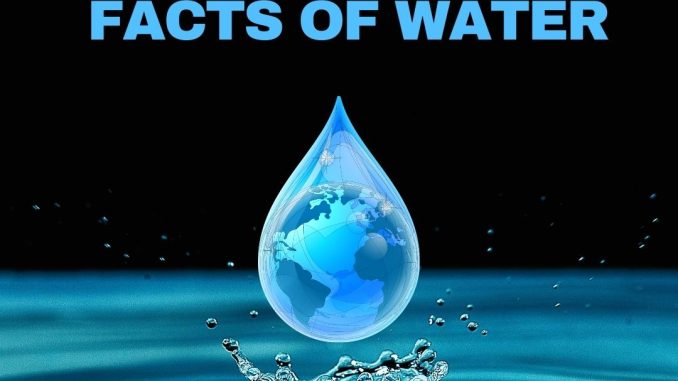
Fresh water may seem to be a common thing to some of us, in particular in the case that we live near the overflow of it, such as streams, lakes and streams. When I walk to the green space in my neighborhood with a small feeder running into it, I regularly wonder if I’ll spot marine animals or fish in the area, as long as I stare long enough. I am always wondering where the water is flowing between and through and what waterway it will eventually be able to eliminate into.
It is possible that fresh water may be abundant to Canadians as Canada is the third most sustainable source of fresh water in the world and has seven percent of the world’s global supply. This is quite a lot in freshwater! This is a very valuable and, for some regions of the globe, a deficiency life-sustaining resource.
Freshwater ecosystems
Freshwater ecosystems don’t just provide water for human use and industrial use, but they are also vital for certain species such as turtles, fish, frogs beavers, birds bugs, and many others.
What fresh water facts do you know about?
- Although 70% of Earth is covered in water, only 3 percent of it is fresh water. It’s found in waterways, lakes, icy masses, wetlands and groundwater.
- 90% of the living things living on Earth depend on the freshwater ecosystems.
- The primary source in freshwater is the dissipation out of the surface of seas. It is estimated to be around 434,000 km3/year.
- Every year, the Canadian streams release 7 per cent of world’s water supply. Inexhaustible freshwater is what can be replenished through precipitation. Water is not inexhaustible if the source cannot be replenished such as an underground repository.
- Nine percent of the area, which is 891,163 square km of the total area of Canada is covered by freshwater.
- The Great Lakes Basin (imparted to the United States) is the world’s largest freshwater lake framework.
- Around 60 percent of Canada’s freshwater runs towards the north, and 85percent of the population reside along the south border to America. United States.
- The largest waterway bowl within Canada is known as the Mackenzie Basin, in light of its waste area and the length.
- There are estimated to be two million lakes within Canada which covers approximately 8 percent of the territory of Canada greater than any other nation on earth.
- There are over 8,500 waterways that are named in Canada.
Despite Canada’s overall excess of freshwater the freshwater ecosystems are at risk of degrading contamination, discontinuity, and degradation. In the past, Nature Conservancy of Canada (NCC) has secured areas of freshwater habitats all over to aid wild animals and people for close to 60 years. We are also creating wetlands, backwoods and meadows to help to channel and store water with the help of water.
Nature Conservancy of Canada (NCC)
For example, NCC has as of recently secured Vidal Bay Forests and Shoreline, a 7,608-hectare area located in Lake Huron on Manitoulin Island which is the largest freshwater island in the world. The alvars, forests and wetlands, as well as fields, store lots of carbon and help in cleaning the air, and hold back rising water. It is particularly important in terms of water quality and quantity as well as the assurance of a clean coasts.
Led through an organization called the BC Wildlife Federation, the Wetland Workforce assists NCC with monitoring the health of wetland habitats along the West Coast. The group is assisting in rebuilding wetlands and coastlines through revegetation, as well as the removal of intrusive species as well as coastal cleaning.
NCC has also developed its Freshwater Conservation Blueprint, a arrangement of five major instruments that will assist in assessing the condition of the ocean and riparian areas that include New Brunswick, PEI, Nova Scotia and southern Quebec. The aim is to aid in revealing better land-use planning and watershed conservation across common or public borders.
These are just a few examples of the NCC is expanding its preservation efforts and adding to Canada’s goal of protecting 70% of its land and our waters by 2030. In the near future, we’ll speed the protection of all more likely to save entire regular frameworks, and improving connections between territories, so nature can continue to convey essential actions that support living things on Earth.
There is Many More Facts listed Here:
- Only 3percent of the Earth’s water is pure water. 97 percent of the water that is on Earth can be described as salt water.
- The water that is found on the surface of the Earth in streams, lakes, lake, streams and marshes is only 0.3 percent of the world’s freshwater.
- 68.7 percent of fresh water that is found on Earth is trapped in glacial mass.
- 30 percent of freshwater is located in the ground.
- 1.7 percent of the water in the world is frozen, making it not usable.
- Water is the primary source of 70.9 percent of Earth’s surface.
- Water may break down other substances more than other fluids such as sulfuric corrosive.
- Over 25% of the filtered water comes from a city water supply, which is the exact source that water used in the regular system originates from.
- A ten-meter climb in the ocean’s levels due to melting glacial mass would be enough to flood 25percent of the population of residents within the United States.
- More fresh air and fresh air are found in the atmosphere than every stream in the world that are joined.
- If all the water fumes in the earth’s atmosphere fell onto the two sides, and flowed equally the earth would be covered the earth with around one inches of liquid.
- The speed of water bubbles is higher when you are in Denver, Colorado than in New York City.
- About 400 billion gallons water are consumed throughout the United States each day.
- About one-third of the water used by Americans is used for the thermoelectric power generation.
- In a single year, the average American house uses more than 100,000 Gallons (inside and out).
- It takes six and a half years for a typical American house to use the much water it will take to be used in an Olympic-sized swimming swimming pool (660,000 Gallons).
- It will take seven and an eighth of a year for the typical American residence to make use of the amount of water that flows over Niagara Falls in a single second (750,000 gallons).
- American inhabitants use approximately 100gallons of water every day.
- Americans use more water each day when flushing the toilet as opposed to showering or taking other actions. In 1900 the year 1900, the number of Americans died from the typhoid virus. By 1960, because of the use chloramine in the treatment of water the number had dropped to 20.
- At 50 gallons per day The private Europeans make use of about half all the drinking water private Americans make use of.
- Sub-Saharan Africans use only 2 to 5 gallons of water per day.
- The typical spigot runs at an average of 2 gallons per minute. You can reserve up at least four gallons of water every day by shutting off the spigot as you wash your teeth.
- The process of rubbing down can use as much as 70 gallons of water. In a five-minute shower, you use 10-25 grams.
- A latrine with a running stream can waste around 200-200 gallons water per day.
- The New York City water supply framework releases 36 million gallons of water each day.
- There are around 1 million kilometers of water pipelines and reservoir conduits across both the United States and Canada, enough to circumnavigate Earth many times.
- Water pipes for the first time that were constructed in some time were constructed by using wood (exhausted logs ) that were then heated with a burning).
- The first water treatment plant was opened at Paisley, Scotland in 1832
- The weight of a gallon is 8.34 pounds.
- The weight of a cubic foot is 62.4 pounds
- A single inch of water that covers one square meter of the land (27,154 gallons) weighs 113 tonnes.
- Water disintegrates at 212 degrees F, 100 degrees C.
- It requires more water to create an additional car (39,090 grams) than it does to fill an above ground pool.
- Water is the primary substance that is typically found in three forms three types: fluid, strong and gas.
- At 1 dribble per second, the spigot will let out 3,000 gallons every year.
- The water content is anywhere between 55-78 percent of the human body weight.

Leave a Reply